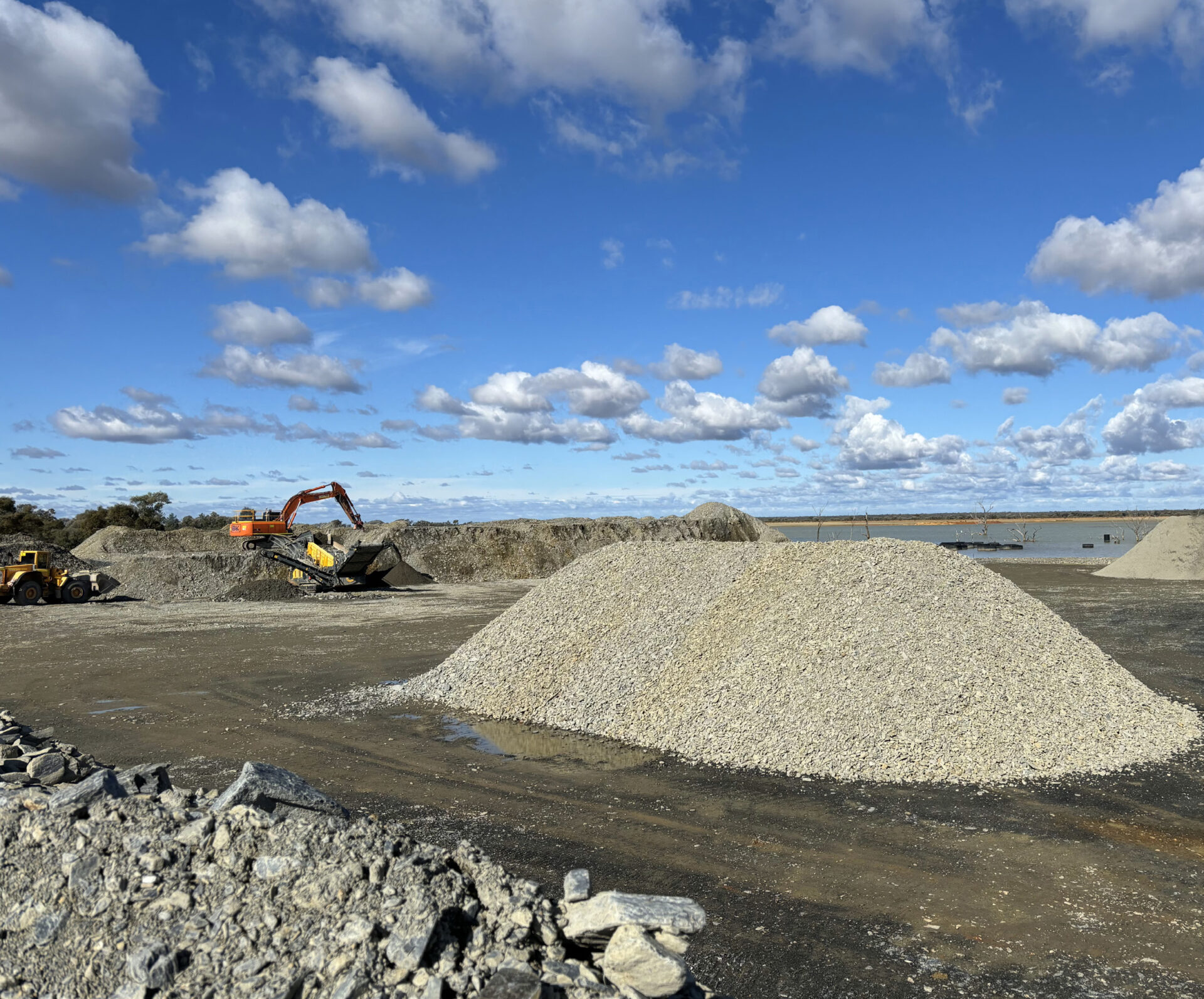Background
SGME was engaged for our expertise in mine closure to prepare a targeted assessment program and a closure management plan to assess the final landform design of a tailings storage facility. The underground mine is located approximately (~) 11 kilometres north of Cobar in central-western New South Wales (NSW). Situated on Consolidated Mining Lease 5, the mine has been in operation since 1965 and has primarily extracted zinc, lead, silver and copper, with the current focus being on copper and silver co-products. The ore undergoes crushing, milling and flotation to produce copper concentrate, yielding over 1.1 million tonnes of copper ore and more than 185,000 tonnes of copper concentrate annually. The mine is located in a semi-arid climate characterised by low humidity, low rainfall and high evaporation. Annual rainfall averages ~400 millimetres (mm), usually falling heavily between December and February; however, rainfall is greatly exceeded by the average annual evaporation of ~2,200 mm.
Objective
The mine received a notice from the NSW Government under section 240 of the Mining Act 1992. This notice highlighted several directives aimed at ensuring effective rehabilitation of the south tailings storage facility (STSF). Directive 1 required nomination of a qualified tailings rehabilitation expert to assess the final landform design of the STSF for approval by the Resources Regulator. Directives 2-5 mandated the provision of a schedule.
for necessary studies and progress reports to support Directive 1, with a final compliance report required under Directive 6. Significant gaps in the mine’s rehabilitation plan were identified including, but not limited to, insufficient detailed information on the final landform design, long-term stability assessments, suitability of surface water management controls, deficiencies in rehabilitation material inventories and discrepancies in volumes of capping materials. These shortcomings posed potential environmental risks as the rehabilitation efforts lacked a comprehensive plan to ensure sustainable outcomes and compliance with statutory obligations.
Solution
SGME’s team of experts developed a strategy and undertook a comprehensive series of tasks identified in a detailed schedule for all required studies. Timely completion of Directive 1 was delivered which involved nomination of SGME’s mine rehabilitation expert for approval by the regulator. A thorough desktop review was conducted which included examining the rehabilitation material inventories and reconciling these inventories with the STSF conceptual cover design. This initial phase laid the groundwork for ensuring that the mine’s rehabilitation efforts were in line with regulatory requirements.
An in-depth report covering various critical aspects of mine rehabilitation was developed to address Directive 2. Our methodology assessed the type, source and quantities of rehabilitation materials required, and evaluated the quantities needed for adequate cover and capping design. Forward projections of changes to rehabilitation inventories and an assessment of current and potential future shortfalls in these materials were evident.
Mitigation controls were proposed to address any identified shortfalls, both on-site and off-site, and a detailed map of rehabilitation material sources formed part of the report. The succinct report summarised rehabilitation material inventories in tabular form and included cost estimations for sourcing these materials, ensuring that the mine’s rehabilitation strategy was both comprehensive and financially viable.
In response to Directive 2, SGME’s team of experts applied their knowledge and in-depth industry experience in tailings closure and rehabilitation to assess the stability of the STSF. This assessment also included validating a preferred cover design, evaluating geochemical stability, and analysing erosion potential and surface water management structures. We conducted various studies in our research and development laboratory including leach column and humidity cell testing, rainfall simulator studies, and WEPP and SIBERIA modelling for erosion prediction and landform analysis. Our efforts culminated in a final report that validated the final landform’s stability and erosion potential, and made future recommendations. A comprehensive closure management plan was prepared that complied with the regulatory environmental licence(s) and made recommendations to ensure the mine’s closure was conducted responsibly and sustainably.
Applying our research, our experience and industry best practices enables SGME to play a significant role in solving complex challenges in the mining industry. Our in-depth understanding of the distribution of chemical elements in rocks and minerals, and absorption of these elements into soil and water, enable our clients to mitigate negative impacts on the environment. This underscores our unwavering stewardship and dedication to sustainable practices, and our goal of creating enduring value for the future.
